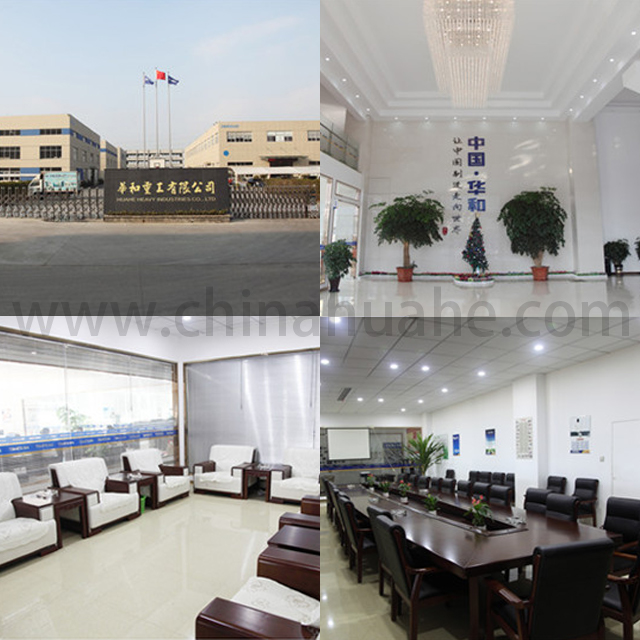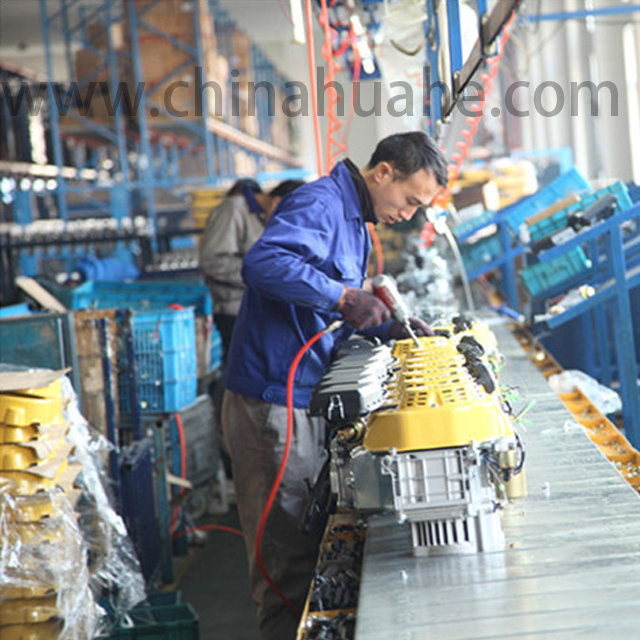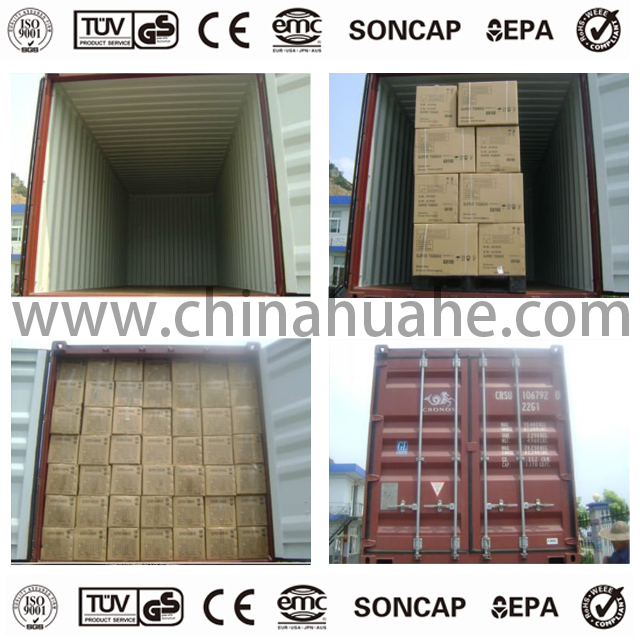HH950/HH1500/HH2500/HH6500
HuaHe
Product Type:Spare Parts of Gasoline Generator
Model:HH950/HH1500/HH2500
Product Name:Piston
Usage:Gasoline Generator
Packing:Customized
Certificate:ISO9001
First, Introduction
Gasoline generator is one of the indispensable power supply equipment in modern society, which uses gasoline as fuel and generates electricity through engine operation. Among them, as one of the important components of the engine, the piston plays a pivotal role. This paper aims to deeply study the structure, working principle and related design of piston in gasoline generator in order to better understand its important role in the generator.
Second, the basic structure and working principle of piston
1. Basic structure
Piston is an important part in the engine cylinder, which realizes the energy conversion of the engine through reciprocating motion. The piston is mainly composed of three parts: top, head and skirt. The top is in contact with the cylinder head, the head is connected to the connecting rod, and the skirt lubricates and reduces friction.
2. How it works
The piston in a gasoline generator circulates by moving up and down in the cylinder. During engine operation, gasoline is mixed with air and burned in the cylinder, and the heat generated pushes the piston downward. Through the connection of the connecting rod to the crankshaft, this motion is converted into rotary motion, which drives the generator to generate electricity.
Third, piston design and material selection
1. Design essentials
The design of the piston is critical to its performance and service life. The design should consider the shape, size, weight and other factors of the piston to ensure that it can smoothly complete the reciprocating movement in the cylinder. In addition, it is also necessary to consider the design of auxiliary systems such as the cooling system and lubrication system of the piston.
2. Material selection
The material choice of piston is directly related to its performance and service life. At present, commonly used piston materials include cast iron, aluminum alloy and so on. Cast iron piston has higher strength and wear resistance, but the weight is larger; The aluminum alloy piston has a relatively light weight and good thermal conductivity. According to the specific needs and design requirements of the engine, it is crucial to choose the right material.
Fourth,Manufacturing process and quality control of piston
1. Manufacturing process
The manufacturing process of piston includes material preparation, processing, heat treatment and other links. Among them, the selection of cutting tools and the arrangement of processing technology should be considered in the processing link; The heat treatment process needs to improve the performance of the material by quenching, tempering and other processes.
2. Quality control
In order to ensure the quality and performance of the piston, strict quality control is required during the manufacturing process. This includes the inspection of raw materials, the monitoring of processing, and the quality inspection of finished products. Through these measures, it can be ensured that the pistons produced meet the design requirements and use requirements.
Fifth, piston maintenance and maintenance
1. Check regularly
In order to ensure the normal operation of the gasoline generator, it is necessary to check and maintain the piston regularly. The inspection includes checking the wear of the piston and checking whether there is carbon accumulation in the cylinder. Once abnormal conditions are found, they should be handled and replaced in time.
2. Maintenance measures
In order to extend the service life of the piston, a series of maintenance measures need to be taken. This includes regular oil changes, cylinder cleaning, etc. In addition, it is also necessary to pay attention to the start and stop operation of the engine to avoid overuse or long-term continuous use.
Sixth,Conclusion
To sum up, the piston in the gasoline generator is an important part of the engine, and its performance and service life directly affect the operation effect and life of the engine. Therefore, it is necessary to fully consider the structure, materials, manufacturing process and quality control in the design and manufacturing process. At the same time, it is necessary to pay attention to regular inspection and maintenance during use to extend its service life and improve the operating efficiency of the engine. Through the analysis and research of this paper, we hope to have a deeper understanding of the related problems of gasoline generator piston.
The piston of a gasoline generator is a key component of the engine's combustion system. It plays a crucial role in converting the energy generated by the combustion process into mechanical motion. Here are some key points about the piston:
1. Function: The primary function of the piston is to transfer the force generated by the combustion of fuel and air mixture in the engine's combustion chamber to the crankshaft. It converts the pressure generated by the combustion process into linear motion, which is then transmitted to the crankshaft.
2. Design: The piston is typically a cylindrical component made of high-strength materials such as aluminum alloy or cast iron. It is precision-engineered to fit within the engine's cylinder bore with minimal clearance. The top of the piston, known as the crown, is designed to withstand high temperatures and pressures generated during combustion.
3. Operation: As the fuel and air mixture is ignited in the combustion chamber, the expanding gases exert pressure on the piston crown. This pressure pushes the piston downward, transferring the force to the connecting rod and ultimately to the crankshaft. The reciprocating motion of the piston converts the linear motion into rotational motion, which drives the generator's electrical generator or other mechanical components.
4. Piston Rings: The piston is equipped with piston rings that provide a seal between the piston and the cylinder wall. These rings help to prevent the combustion gases from leaking past the piston and ensure efficient combustion. They also help to regulate the lubrication of the cylinder wall by distributing oil along its surface.
5. Maintenance: Regular maintenance of the piston is important to ensure its proper functioning and longevity. This may include periodic inspection for wear or damage, cleaning to remove carbon deposits, and lubrication of the piston rings. Any signs of wear, damage, or abnormal operation should be addressed promptly to prevent engine performance issues.
6. Replacement: Over time, the piston may wear out or become damaged due to regular use or other factors. If the piston is not functioning properly or is damaged, it may need to be replaced. Piston replacement is a complex task and often requires professional expertise. It is recommended to consult the generator's user manual or contact the manufacturer for guidance on the specific replacement procedure and compatible parts.
In summary, the piston of a gasoline generator is a crucial component that converts the energy generated by the combustion process into mechanical motion. It transfers the force generated by the combustion to the crankshaft, driving the generator's electrical generator or other mechanical components. Regular maintenance and professional assistance, if needed, are important for the proper functioning of the piston.

Model:HH950

Model:HH1500

Model:HH2500

Model:HH6500
Advantages
1.100% testing with loaded before packing.
2.With ISO9001 certification.
3.Reasonable price with higher quality.




Product Type:Spare Parts of Gasoline Generator
Model:HH950/HH1500/HH2500
Product Name:Piston
Usage:Gasoline Generator
Packing:Customized
Certificate:ISO9001
First, Introduction
Gasoline generator is one of the indispensable power supply equipment in modern society, which uses gasoline as fuel and generates electricity through engine operation. Among them, as one of the important components of the engine, the piston plays a pivotal role. This paper aims to deeply study the structure, working principle and related design of piston in gasoline generator in order to better understand its important role in the generator.
Second, the basic structure and working principle of piston
1. Basic structure
Piston is an important part in the engine cylinder, which realizes the energy conversion of the engine through reciprocating motion. The piston is mainly composed of three parts: top, head and skirt. The top is in contact with the cylinder head, the head is connected to the connecting rod, and the skirt lubricates and reduces friction.
2. How it works
The piston in a gasoline generator circulates by moving up and down in the cylinder. During engine operation, gasoline is mixed with air and burned in the cylinder, and the heat generated pushes the piston downward. Through the connection of the connecting rod to the crankshaft, this motion is converted into rotary motion, which drives the generator to generate electricity.
Third, piston design and material selection
1. Design essentials
The design of the piston is critical to its performance and service life. The design should consider the shape, size, weight and other factors of the piston to ensure that it can smoothly complete the reciprocating movement in the cylinder. In addition, it is also necessary to consider the design of auxiliary systems such as the cooling system and lubrication system of the piston.
2. Material selection
The material choice of piston is directly related to its performance and service life. At present, commonly used piston materials include cast iron, aluminum alloy and so on. Cast iron piston has higher strength and wear resistance, but the weight is larger; The aluminum alloy piston has a relatively light weight and good thermal conductivity. According to the specific needs and design requirements of the engine, it is crucial to choose the right material.
Fourth,Manufacturing process and quality control of piston
1. Manufacturing process
The manufacturing process of piston includes material preparation, processing, heat treatment and other links. Among them, the selection of cutting tools and the arrangement of processing technology should be considered in the processing link; The heat treatment process needs to improve the performance of the material by quenching, tempering and other processes.
2. Quality control
In order to ensure the quality and performance of the piston, strict quality control is required during the manufacturing process. This includes the inspection of raw materials, the monitoring of processing, and the quality inspection of finished products. Through these measures, it can be ensured that the pistons produced meet the design requirements and use requirements.
Fifth, piston maintenance and maintenance
1. Check regularly
In order to ensure the normal operation of the gasoline generator, it is necessary to check and maintain the piston regularly. The inspection includes checking the wear of the piston and checking whether there is carbon accumulation in the cylinder. Once abnormal conditions are found, they should be handled and replaced in time.
2. Maintenance measures
In order to extend the service life of the piston, a series of maintenance measures need to be taken. This includes regular oil changes, cylinder cleaning, etc. In addition, it is also necessary to pay attention to the start and stop operation of the engine to avoid overuse or long-term continuous use.
Sixth,Conclusion
To sum up, the piston in the gasoline generator is an important part of the engine, and its performance and service life directly affect the operation effect and life of the engine. Therefore, it is necessary to fully consider the structure, materials, manufacturing process and quality control in the design and manufacturing process. At the same time, it is necessary to pay attention to regular inspection and maintenance during use to extend its service life and improve the operating efficiency of the engine. Through the analysis and research of this paper, we hope to have a deeper understanding of the related problems of gasoline generator piston.
The piston of a gasoline generator is a key component of the engine's combustion system. It plays a crucial role in converting the energy generated by the combustion process into mechanical motion. Here are some key points about the piston:
1. Function: The primary function of the piston is to transfer the force generated by the combustion of fuel and air mixture in the engine's combustion chamber to the crankshaft. It converts the pressure generated by the combustion process into linear motion, which is then transmitted to the crankshaft.
2. Design: The piston is typically a cylindrical component made of high-strength materials such as aluminum alloy or cast iron. It is precision-engineered to fit within the engine's cylinder bore with minimal clearance. The top of the piston, known as the crown, is designed to withstand high temperatures and pressures generated during combustion.
3. Operation: As the fuel and air mixture is ignited in the combustion chamber, the expanding gases exert pressure on the piston crown. This pressure pushes the piston downward, transferring the force to the connecting rod and ultimately to the crankshaft. The reciprocating motion of the piston converts the linear motion into rotational motion, which drives the generator's electrical generator or other mechanical components.
4. Piston Rings: The piston is equipped with piston rings that provide a seal between the piston and the cylinder wall. These rings help to prevent the combustion gases from leaking past the piston and ensure efficient combustion. They also help to regulate the lubrication of the cylinder wall by distributing oil along its surface.
5. Maintenance: Regular maintenance of the piston is important to ensure its proper functioning and longevity. This may include periodic inspection for wear or damage, cleaning to remove carbon deposits, and lubrication of the piston rings. Any signs of wear, damage, or abnormal operation should be addressed promptly to prevent engine performance issues.
6. Replacement: Over time, the piston may wear out or become damaged due to regular use or other factors. If the piston is not functioning properly or is damaged, it may need to be replaced. Piston replacement is a complex task and often requires professional expertise. It is recommended to consult the generator's user manual or contact the manufacturer for guidance on the specific replacement procedure and compatible parts.
In summary, the piston of a gasoline generator is a crucial component that converts the energy generated by the combustion process into mechanical motion. It transfers the force generated by the combustion to the crankshaft, driving the generator's electrical generator or other mechanical components. Regular maintenance and professional assistance, if needed, are important for the proper functioning of the piston.

Model:HH950

Model:HH1500

Model:HH2500

Model:HH6500
Advantages
1.100% testing with loaded before packing.
2.With ISO9001 certification.
3.Reasonable price with higher quality.




